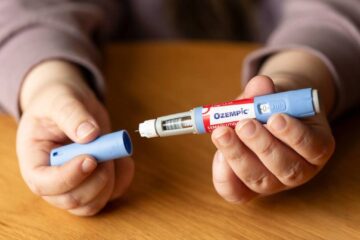The people at Eli Lilly (LLY) say they’re working as fast as they can.
The drugmaker, which reported first-quarter earnings on Tuesday, responded to concerns about supplies of two of its key products, Mounjaro and Zepbound.
Mounjaro and Zepbound are the same drug, tirzepatide, but they are marketed under two different names. Zepbound is approved to treat obesity, while Mounjaro is approved to treat diabetes.
Currently, several weight-loss drugs are in limited supply, according to the U.S. Food and Drug Administration.
Eli Lilly’s chief financial officer, Anat Ashkenazi told analysts during the company’s earnings call that “the demand for tirzepatide is very strong.
Related: Ozempic, weight-loss drugs force a change of focus on health
“Each week, hundreds of thousands of people fill scripts from Mounjaro and Zepbound,” she said. “While we are working tirelessly to ramp supply and expect meaningful increases in shipment volumes in the second half of the year, demand continues to outstrip even increased supply.”
Worldwide, obesity among adults has more than doubled since 1990, and has quadrupled among children and adolescents, according to the World Health Organization.
The U.S. Centers for Disease Control and Prevention has described obesity as “a common, serious, and costly disease.”
Lilly’s chairman and chief executive, David Ricks, told analysts that the company’s strong revenue growth was driven by recent product launches, primarily Mounjaro and Zepbound.
Analysts respond to Eli Lilly’s first-quarter results
Eli Lilly
Lilly raises full-year earnings guidance
Eli Lilly reported first-quarter earnings of $2.58 a share, up 59% from $1.62 a share a year earlier, beating the FactSet consensus analyst estimate of $2.46.
Revenue totaled $8.77 billion, up 26% from $6.96 billion a year earlier but short of FactSet’s call for $8.93 billion.
Related: CVS stock crashes after Aetna Medicare Advantage hit
The company also boosted its full-year guidance and now expects adjusted earnings of $13.50 to $14 a share, up from a previous forecast range of $12.20 to $12.70.
Eli Lilly expects revenue for the year to range from $42.4 billion to $43.6 billion, an increase of $2 billion at either end of the range. FactSet calls for earnings of $13.41 a share on $42.48 billion in sales.
TheStreet Pro’s Stephen Guilfoyle noted that Eli Lilly does not include its balance sheet and statement of cash flows with its earnings release.
“That drives me crazy,” he said. “I am sure that not that much has changed since February, but I want to know that. Things change.”
He added that the stock was among his top 2023 performers, but “I would expect profit takers to feast on this stock the next chance they get.”
Lilly analysts update target prices
Several analysts issued reports updating their target prices after Lilly reported results.
Truist analyst Robyn Karnauskas raised the firm’s price target on Eli Lilly to $892 from $850 and affirmed a buy rating on the shares.
Related: Analyst updates Johnson & Johnson stock price target after earnings
The analyst said that first-quarter revenue was “solid,” driven by Mounjaro and Zepbound, and its performance and underlying demand seem healthy.
Karnauskas added that management’s raised guidance is also reflected in increased Mounjaro and Zepbound revenue, given the ramp-up in supply and capacity.
BMO Capital analyst Evan Seigerman raised the firm’s price target on Eli Lilly to $1,001 from $900 and reiterated an outperform rating on the shares.
The company’s revenue miss in Q1 was a “high quality” one characterized by “unprecedented” demand and justified by supply constraints, Seigerman said.
BMO added that the quarter also highlights Eli Lilly’s efforts to meet demand, drive growth, and deepen the moat.
Lilly sales growth ‘impressive,’ analyst says
Cantor Fitzgerald raised the firm’s price target on Eli Lilly to $885 from $815 and maintained an overweight rating on the shares.
More Wall Street Analysts:
Analyst unveils new Nike price target ahead of big summer for sportsAnalysts weigh in on Google-parent Alphabet’s stock after cloud eventAnalysts revamp Disney stock price target after proxy fight
Despite the top-line miss, which was widely anticipated due to supply constraints, Eli Lilly’s sales growth of 26% in the first quarter was still impressive, the investment firm said.
Zepbound is already annualizing at more than $2 billion a year in its first full quarter after launch, positioning the drug for tens of billions of sales.
This means there could be upside to already bullish forecasts for Zepbound, and Lilly is well-positioned to deliver on growth with other key drugs in the pipeline, Cantor said.
Wells Fargo raised the firm’s price target on Eli Lilly to $875 from $825 while affirming an overweight rating on the shares.
The investment firm said that it continued to like Eli Lilly, as the first-quarter results underscored robust demand for products related to diabesity, or diabetes associated with obesity.
Wells Fargo said it also continued to see beat-and-raise potential in the near to medium term, and the company’s growing pipeline helps its long-term prospects.
And Barclays raised its price target on Eli Lilly to $913 from $810 and maintained an overweight rating on the shares after the first-quarter report.
The investment firm tells investors in a research note that the company’s guidance addressed key near-term concerns, and the stock’s catalyst backdrop is turning more favorable.
Related: Veteran fund manager picks favorite stocks for 2024


